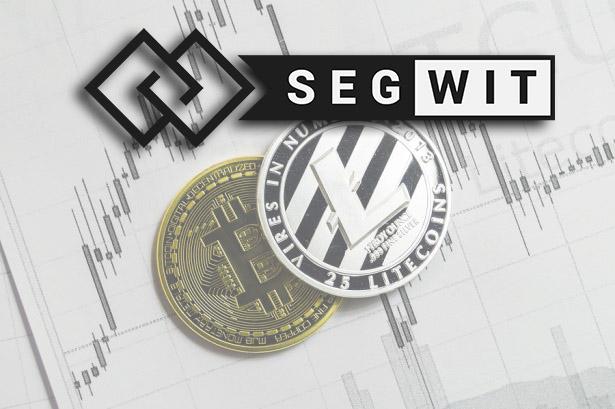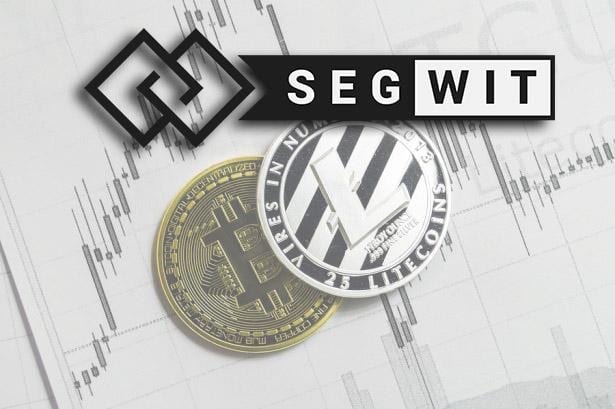The Bitcoin user base is experiencing a period of rapid growth. More and more people are buying, using and exchanging with bitcoin. The original Bitcoin protocol and network were never meant to handle this kind of stress, which has led to Bitcoin transfers becoming slower and more expensive. This in turn has made many to think whether it is even possible to scale Bitcoin so it can be used in a truly global way.
But basically this is just a technical question. Bitcoin is a computer program, and like all computer programs, it can be improved upon. If there’s a problem in Bitcoin, it can be be fixed. One of these fixes, which is rapidly increasing in usage, is Segregated Witness, one of the first and best updates and solutions for Bitcoins scaling.
This article will concentrate on the Segregated Witness scaling update for Bitcoin. SegWit has already affected Bitcoin in a positive way, but in the future it has the potential to offer us a lot quicker and cheaper Bitcoin. SegWit will also allow people to create additional upgrades, making Bitcoin even more scalable and powerful.

SegWit makes cryptocurrencies like Bitcoin and Litecoin more powerful.
SegWit in a Nutshell
Segregated Witness – affectionately called SegWit – is a scaling upgrade for Bitcoin’s protocol that changed the way the Bitcoin protocol handles transaction data. Without going to particular technical details, the main idea behind SegWit is a technical trick which makes it possible to store more data related to actual Bitcoin translations to blockchain’s blocks than previously was possible. In essence this means faster and cheaper transactions.
Besides making Bitcoin faster and cheaper, SegWit offers other benefits as well. For an example SegWit enhances the security of Bitcoin network by making certain attacks impossible. Of these the most famous is “transaction malleability”, which means that before SegWit it was possible for third parties to manipulate certain unconfirmed transactions. For SegWit transactions, this kind of attack is impossible.
SegWit also makes it possible to build additional security and scaling features for Bitcoin. One of the most promising is the Lightning Network, which is supposed to enhance Bitcoin’s speed by magnitude of thousands.

In a nutshell Segregated Witness is a technological trick that makes Bitcoin faster, cheaper and more secure.
Short History of SegWit and the Scaling Debate
Segregated Witness was first developed to fix the bitcoin malleability bug, but the creators soon discovered there could be other beneficial use cases as well.
SegWit’s history is best known from the part it had in the “scaling debate” that was going on within the Bitcoin and cryptocurrency community for years. Basically the scaling debate was about how to scale the Bitcoin protocol to answer to the raising demand. Bitcoin’s user base and adaptation grew faster than anyone could have imagined, which caused the Bitcoin network problems with speed and raising transaction fees. SegWit offered one of the first possible solutions to the scaling problem.
The first time SegWit was proposed in 2011 by a Bitcoin Core developer doctor Pieter Wuille. Wuille’s proposition gained lots of traction, which in turn lead to many developers beginning to develop their own SegWit implementations. The current implementation was revealed in the December of 2015. Developer Luke Dashjr, best known by the nick Luke-Jr figured out a way to implement Segwit as a soft fork. Soft fork update is a change to bitcoin protocol which is compatible with older versions of the software. This means that for the update to go through only majority of node operators need to upgrade.
Though SegWit was from the very first day seen as an extremely potential and elegant solution, it also caused some disarray within the Bitcoin community. Some thought that even though SegWit is a promising solution, more drastic measures are needed to scale Bitcoin, because with SegWit it takes time for the fees to lower and transactions to become faster. These people thought that Bitcoin scaling should be handled in a way that the effects of scaling update would be immediately noticeable.
Though the debate continued and heated up the following year, it seemed that the SegWit option was becoming the one most people would agree with. This opinion was cemented when SegWit was implemented in Litecoin and none of the problems criticis cited came to pass. Finally SegWit was implemented to the main Bitcoin network in the summer of 2017.

The scaling debate took years, but finally it is at least mostly over.
How SegWit Has Benefitted the Network
After the implementation of Segregated Witness, it soon became clear that the solution indeed could offer what it promised for. Even though in the beginning only few applications offered SegWit support, users soon begun to see transaction prices of over 35% lower than the fees before SegWit. Users of SegWit could send bitcoin transactions with a fee of as low as $0.3 and still get their transactions to the next block mined. SegWit truly did make the network far faster and cheaper, even though its adaptation was just beginning.
After the successful launch of SegWit, many more exchanges, hardware wallets and other services and applications begun to use SegWit. For an example the hardware wallet provider Trezor and a Bitcoin wallet application Samourai implemented SegWit on their own services. Soon many others followed. And the fees got even lower.
SegWit’s implementation paved way for a faster Bitcoin adaptation. As soon as the heated scaling debate was over and SegWit was implemented, Bitcoin begun to attract masses of new investors and users. This in turn lead to the Bitcoin network getting clogged once again. Critics of SegWit seemed to have been right on one thing; it takes time for mass-adaptation of SegWit. If the adaptation rate of SegWit is slower than the adaptation rate of Bitcoin, the fees would continue to grow and the network would continue to grow more clogged.
Within the latter half of the year the price of a bitcoin rose from to completely new highs, passing $20 000 threshold in December. As the price grew and more and more people begun to use bitcoin, the fees were growing as well. In the end of the year a bitcoin transaction could cost as much as over $10 – especially for those who used services without SegWit support.

SegWit has already made the Bitcoin network faster and this development is poised to continue as long as SegWit adaptation rate grows.
Future Adaptation is Important
As the price of bitcoin is soaring in highs around $10 000, the transfer fees still remain quite high and the need for Segregated Witness adaptation grows. As more people begin to use applications and services that support SegWit, the more the transaction fees will decrease. Thus for Bitcoin’s adaptation rate to continue growing, it is imperative that SegWit will be implemented to as high a degree as possible.
Luckily the developers seem to understand this and the need for urgency. In the near future the development team behind Bitcoin Core will release a new version for the reference software of Bitcoin. This new version will be able to send and receive SegWit transactions as a default. Because most of the applications and services concerning the Bitcoin space are in some way based around Bitcoin Core, this new release of Bitcoin Core will in all likelihood give raise to new surge of SegWit adaptation. As more and more services will implement SegWit, the cheaper and faster Bitcoin becomes.
SegWit implementation has also the potential to raise bitcoin’s price considerably. Because SegWit makes Bitcoin faster and cheaper, it also makes it more usable. The more uses Bitcoin has, the more likely it is that bitcoins price will continue growing. A mass-adaptation of SegWit will probably herald at least some growth in bitcoin’s price as well.
 A
A
Decentralized system like Bitcoin is composed of many pieces, like users, exchanges and service providers. For SegWit’s future it is important that most – if not all – of these pieces will become SegWit-friendly.
SegWit Will Enable Future Updates
As previously mentioned, one of the main benefits of Segregated Witness is that it allows the further scaling of Bitcoin protocol by making it possible to build the so-called Lightning Networks over Bitcoin. In theory Lightning Network could be operable without SegWit, but without SegWit it would still be possible to manipulate data with malleability attacks and such. This in turn would make Lightning Networks potentially insecure and unstable. With SegWit it is possible to make Lightning Networks that are secure and usable.
Lightning Network is an upcoming update for Bitcoin. Lightning Networks work by transferring a part of bitcoin transactions away from Bitcoin’s main blockchain. For Bitcoin to work, it is unnecessary to store all the transaction data to the blockchain. If a group of people – for an example, the users of a Bitcoin exchange – exchange bitcoin among themselves, it is unnecessary to write them all down to Bitcoin’s blockchain. All that the blockchain requires is that the final balances of all the wallets match. This in turn allows the Lightning Networks to support transaction speeds thousands of times faster and cheaper than currently. Another benefit of Lightning Network is that transactions there either go through fast or don’t. They can’t get stuck for weeks like bitcoin transactions with too low fees can at the moment.
The development of Lightning Network is nearly complete. There have already been actual, concrete tests in the Bitcoin’s main network, which have demonstrated that Lightning Networks work and are can be implemented with a bigger scale. With SegWit becoming more common, more and more services and applications are capable of implementing Lightning Network applications, thus making the network faster and cheaper.
In the Lightning future Bitcoin may be faster and cheaper way to transfer value than any other payment solution that we have previously seen.

Lightning Network gets its name from the way it transfers transactions “lightning fast”. (PHOTO: Daniel Grohman)
What the Users Can Do
The users of Bitcoin applications and services play a major part in implementation of Segregated Witness. As more users choose to use SegWit compatible services, the lower their fees (and in general the fees of all the Bitcoin network transactions) become. Users can also put pressure on services to make their SegWit updates more urgent by choosing SegWit enabled services.
There are already several service providers ranging from physical Bitcoin wallets to smartphone applications that use SegWit. By using these services instead of services that don’t use SegWit, an user can both help themselves to get cheaper transactions and at the same time encouraging others to use SegWit as well.
In Coinmotion we are ready to implement SegWit support as soon as the new version of Bitcoin Core with SegWit support is released. We are also beginning to develop our own Lightning Network applications to give users easier, faster and cheaper transactions when using Coinmotion or related services. We are currently looking for a talented software developer for this task.
Segregated Witness was the first major scaling update for Bitcoin, but it will not be the last. As Lightning Networks near their completion, Bitcoin is ready to bloom to become a truly worldwide way to transfer wealth in a fast, reliable and economically viable way. With SegWit and Lightning Networks Bitcoin becomes superior to all the previous ways of transferring value, and truly a technological marvel of fintech industry.

Everyone can help with adaptation of SegWit, for an example by choosing a smartphone wallet that implements SegWit.



